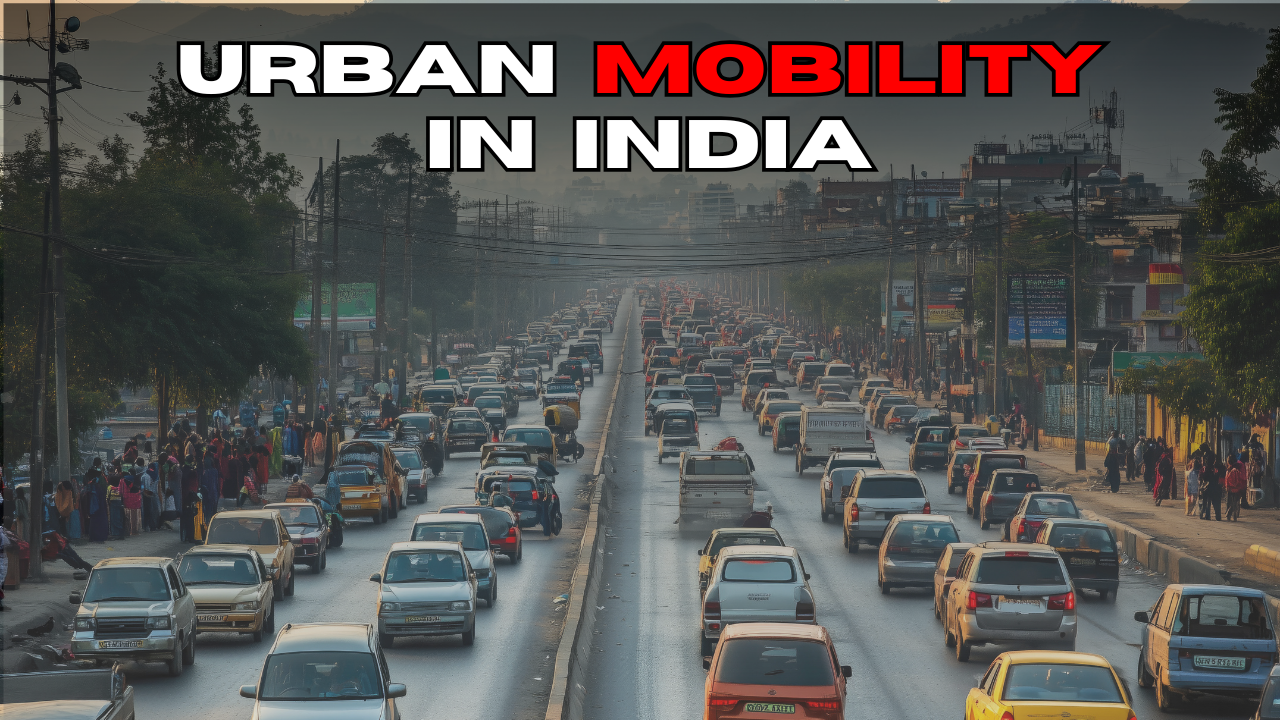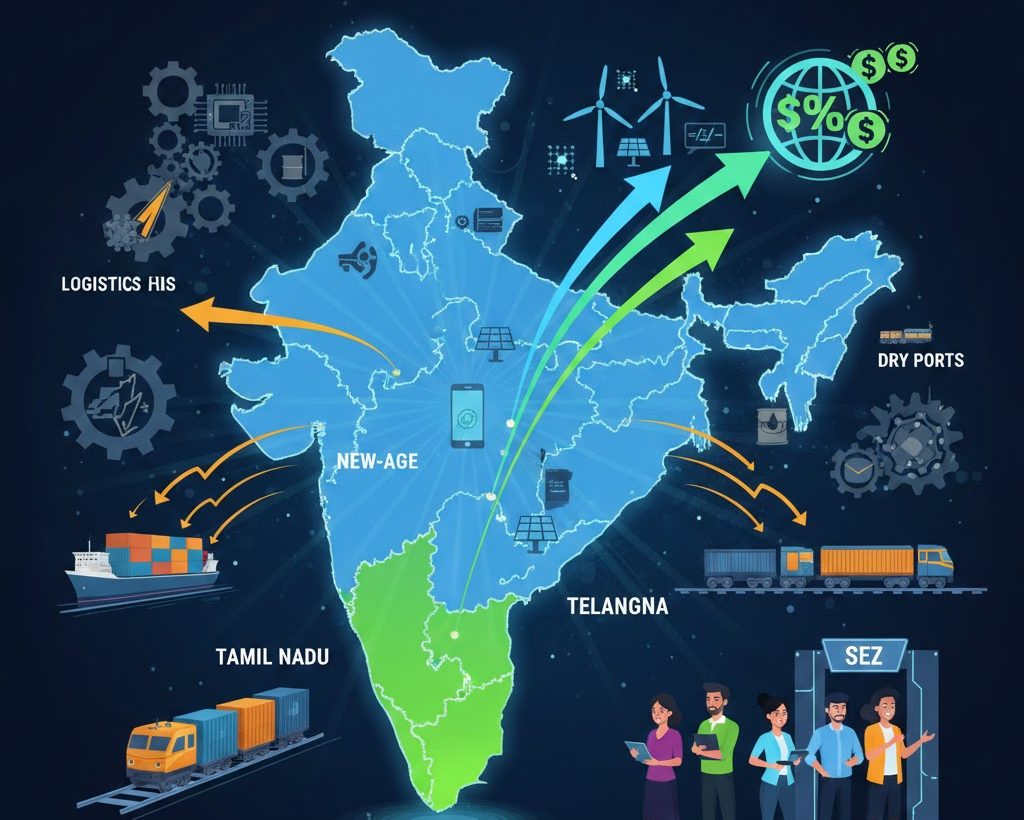Revolutionising Urban Mobility in India: Bridging Gaps for a Sustainable Future
Introduction – Urban Mobility in India.
India’s cities are growing at a rapid pace, with millions of people relying on public transport and non-motorised options like walking and cycling every day. However, this growth has brought about many challenges. Urban transport systems often fail to meet the needs of commuters, leading to long travel times, unsafe journeys, and a high cost of travel. Despite efforts like the National Urban Transport Policy (NUTP), which aimed to improve mobility in cities, the progress has been slow. This essay explores the current state of urban transport in India, the issues it faces, lessons from global successes, and the potential solutions to make transport more efficient and sustainable.
The Current State of Urban Transport
Indian cities are shaped by a mix of history and modern development. Unlike cities in Europe with central business districts, Indian cities often have scattered business hubs. This spread makes planning for transport systems challenging. In the past, cities like Delhi and Mumbai developed unevenly, with wealthier sections enjoying better facilities while older parts became neglected. Today, urban sprawl continues, creating longer travel distances for commuters.
The NUTP, introduced in 2006, outlined the main problems of urban transport in India:
- Rising Costs: Transport is becoming increasingly expensive, especially for lowerincome groups.
- Unsafe Roads: Accidents and fatalities have increased over the years, making urban travel risky.
- Growing Pollution: The increasing use of private vehicles has led to higher pollution levels, damaging both health and the environment.
Although the NUTP aimed to address these issues through better land use, improved public transport, and safer infrastructure for pedestrians and cyclists, the changes have been limited. Roads remain dominated by private vehicles, and public transport systems often fail to attract sufficient users due to poor coordination and overcrowding.
Lessons from Global Cities
Cities around the world have faced similar transport challenges, but many have successfully developed systems that are efficient and user-friendly. For example, Singapore integrates its trains and buses with a single ticketing system and synchronised schedules. Similarly, Tokyo’s Shinjuku station demonstrates how rail and subway networks can connect seamlessly, allowing commuters to switch between services with ease. In Europe, cities like Amsterdam and Paris provide safe cycling paths, reliable public transport, and well-planned pedestrian areas.
One key to their success is multimodal integration, where different types of transport systems— such as buses, trains, and bikes—work together. This reduces delays and makes travel smoother for passengers. Real-time information systems, like London’s Transport for London (TfL), keep passengers informed about schedules and delays, helping them plan better. Such systems are an inspiration for Indian cities, showing how planning and technology can create a cohesive transport network.
Challenges in India’s Urban Transport
In contrast to global examples, Indian cities struggle with fragmentation. Public transport modes like buses, metros, and suburban trains often operate in isolation rather than as a unified system. For example, buses and metro trains in many cities do not align their schedules, forcing passengers to wait unnecessarily. This lack of coordination discourages people from using public transport and increases the reliance on private vehicles.
Overcrowding is another major issue. A survey found that 37% of commuters avoid public transport because of overcrowded buses and trains, while 28% cite irregular schedules as a reason. Additionally, infrastructure for walking and cycling is either missing or poorly maintained, making last-mile connectivity a significant challenge.
Despite these obstacles, some cities have made progress. In Kochi, the Kochi One project integrates metro services, buses, and even bike-sharing facilities. The National Capital Region’s Regional Rapid Transit System (RRTS) combines metro-like rail services with feeder buses to improve connectivity. These initiatives show that with the right planning and resources, it is possible to create effective urban transport systems.
The Role of Multimodal Integration
A well-integrated transport system is essential for addressing urban mobility challenges. Multimodal integration involves connecting different modes of transport to create a seamless experience for commuters. This means ensuring that trains, buses, and other services operate on harmonised schedules, and that passengers can easily switch between them.
Globally, cities like Bogotá in Colombia have demonstrated the benefits of such integration. Bogotá’s TransMilenio Bus Rapid Transit (BRT) system uses a “trunk-and-feeder” model, where large buses operate on main routes and smaller feeder buses connect residential areas to these routes. This system not only reduces travel times but also encourages more people to use public transport instead of private cars.
In India, similar strategies can help reduce the reliance on private vehicles. By developing feeder services and real-time tracking systems, cities can ensure that buses and trains are more accessible and reliable. Furthermore, introducing smart ticketing solutions, like Singapore’s EZ-Link card, can simplify fare payments and make travel more convenient.
Low-Cost and Sustainable Solutions
Indian cities have the advantage of dense populations, which makes public transport a practical choice if implemented correctly. Unlike expensive metro projects, which take years to build, bus systems and cycle lanes can be developed relatively quickly and at a lower cost. For instance, the introduction of low-floor buses can make public transport safer and more comfortable for passengers. These buses are easier to board and reduce accidents, especially for elderly passengers.
Safety is a critical concern for all transport users, particularly pedestrians and cyclists. Indian streets often lack basic infrastructure, such as wide footpaths or protected cycle lanes. Creating safe and accessible pathways can encourage more people to walk or cycle, reducing congestion and pollution. In cities like Amsterdam, cycling is a major mode of transport because the infrastructure is designed to prioritise safety.
Additionally, involving street vendors in urban planning can make streets more vibrant and safer. Vendors provide natural surveillance, which helps reduce crime. By allocating space for them on pavements, cities can create a more inclusive environment that benefits everyone.
A Long-Term Vision for Sustainable Transport
Looking ahead, Indian cities must adopt a holistic approach to transport planning. This involves not only improving infrastructure but also changing policies to promote sustainable travel. For instance, transport-oriented development (TOD) encourages high-density living near public transport hubs. However, care must be taken to avoid displacing lower-income groups, who are often forced to move further away when cities focus on high-end development.
Environmental sustainability is another crucial aspect. Transport systems must reduce their dependence on fossil fuels and promote cleaner alternatives. At the same time, governments need to discourage excessive use of private vehicles by introducing congestion charges or higher parking fees. By focusing on non-motorised transport and public transit, cities can reduce their carbon footprint and make urban areas more liveable.
Conclusion
The future of urban transport in India depends on how effectively cities can overcome their current challenges. By learning from global best practices and building on local successes, Indian cities have the potential to transform their transport systems. The key lies in prioritising multimodal integration, enhancing safety, and ensuring that transport is accessible to all. With thoughtful planning and investment, India’s urban centres can become models of sustainable mobility, setting an example for other developing nations.
Subscribe to our Youtube Channel for more Valuable Content – TheStudyias
Download the App to Subscribe to our Courses – Thestudyias
The Source’s Authority and Ownership of the Article is Claimed By THE STUDY IAS BY MANIKANT SINGH




